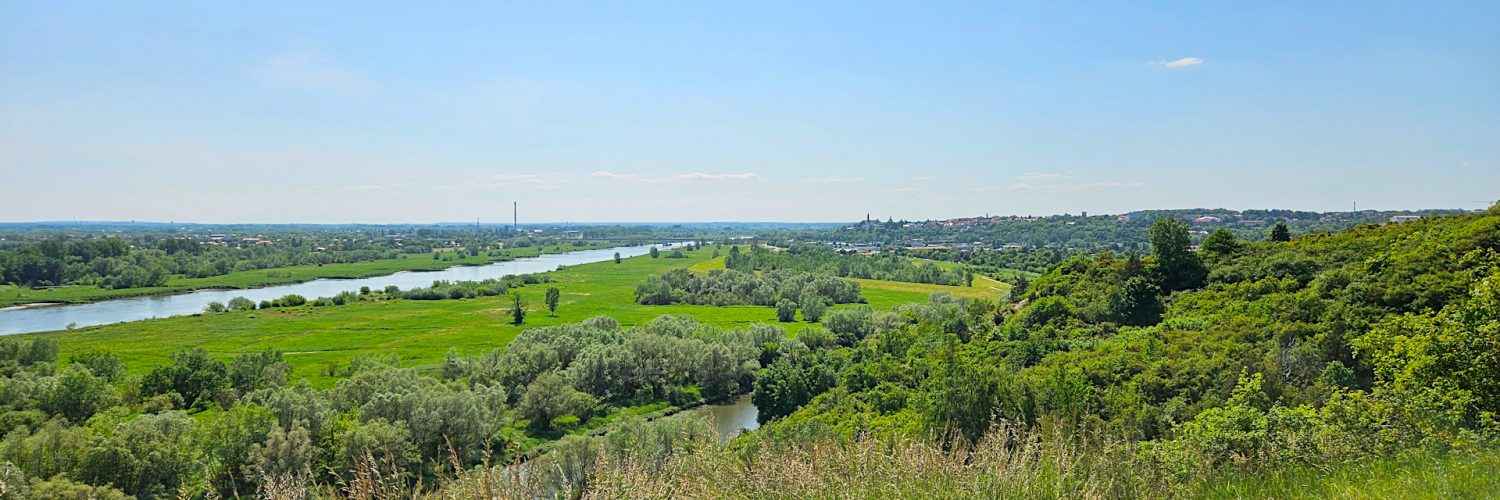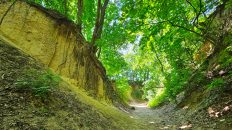🇵🇱
🚶 Wirtualna wędrówka: Spacer po Górach Pieprzowych, Polska
🏞️ Trasa: Kamień Plebański, parking (145 m n.p.m.; 50.684094, 21.778126) – Rezerwat Góry Pieprzowe (145 m n.p.m.; 50.683899, 21.783445) – Punkt widokowy (182 m n.p.m.; 50.684699, 21.785551) – Zejście z czerwonego szlaku (146 m n.p.m.; 50.684910, 21.795030) – Rezerwat Góry Pieprzowe (145 m n.p.m.; 50.683899, 21.783445) – Łupki kambryjskie (168 m n.p.m.; 50.685318, 21.783780) – Kamień Plebański, parking (145 m n.p.m.; 50.684094, 21.778126)
🆔 Oznaczenie: czerwony szlak, ścieżki oznaczone na mapie
📏 Długość: około 3,3 km
⏲️ Czas przejścia: około 1:30 h
↗️ Suma podejść: 190 m
↘️ Suma zejść: 190 m
00:00:22 Kamień Plebański, parking
00:04:05 Łupki kambryjskie
00:16:41 Starorzecze Wisły
00:17:16 Rezerwat Góry Pieprzowe
00:17:36 Łupki kambryjskie
00:18:11 Łupki kambryjskie
00:22:32 Punkt widokowy
00:50:19 Łupki kambryjskie
00:53:31 Zejście z czerwonego szlaku
00:59:13 Starorzecze Wisły
01:00:52 Łupki kambryjskie
01:05:08 Starorzecze Wisły
01:10:41 Rezerwat Góry Pieprzowe
01:15:19 Łupki kambryjskie
01:21:26 Rezerwat Góry Pieprzowe
01:23:59 Łupki kambryjskie
01:28:50 Łupki kambryjskie
01:32:07 Kamień Plebański, parking
Wyżyna Sandomierska – wschodnia część Wyżyny Kieleckiej rozciągająca się pomiędzy Górami Świętokrzyskimi na zachodzie i południowym zachodzie, Przedgórzem Iłżeckim na północy a doliną Wisły na wschodzie. Wyżynę budują skały Gór Świętokrzyskich pokryte utworami lessowymi. Jej powierzchnia jest zrównana, poprzecinana licznymi wąwozami i parowami. Oprócz tego występują tu wały lessowe, wcięcia i inne formy ukształtowania terenu. Na skałach lessowych utworzyły się żyzne czarnoziemy stanowiąc, w połączeniu z charakterystycznym mikroklimatem, idealne miejsce pod uprawę roli. O wyjątkowości mikroklimatu wyżyny może świadczyć obecność licznych gatunków kserotermicznych, które upodobały sobie sandomierskie zbocza.
Góry Pieprzowe – pagóry w południowo-wschodniej części Wyżyny Sandomierskiej nad Wisłą. Zbudowane są z łupków kambryjskich, powstałych jako osady w morzu kambryjskim ok. 500 mln lat temu a następnie uformowanych w czasie tzw. fałdowań sandomierskich około 200 mln lat temu. W dzisiejszym położeniu upad warstw sięga 90° lub nawet przekracza tę wartość, co oznacza, że ławice osadów stoją tu teraz pionowo lub są częściowo przewrócone. Łupki te rozpadają się w procesie wietrzenia w specyficzny sposób, a zwietrzelina barwą i kształtem przypomina ziarna pieprzu, co dało nazwę temu rejonowi. To za przyczyną łupków w tym miejscu pojawiły się następnie rośliny i zwierzęta, ściśle z nimi związane. Najczęściej na obrzeżach podłoże jest bogate w gliny morenowe, naniesione przez lodowiec oraz lessy, utworzone przez wiatr. Jest to wyjątkowo żyzna gleba, która jest przyczyną występowania tu tak wielu gatunków roślin. Na florę Gór Pieprzowych składa się 397 stwierdzonych dotychczas gatunków roślin naczyniowych, porostów, wątrobowców i mchów. Teren ten to przede wszystkim jedno z niewielu naturalnych i dużych „rosariów”, gdzie na niewielkim terenie rośnie kilkanaście gatunków róż. Poza różami, kwitnącymi obficie w maju i czerwcu można spotkać tu wielu przedstawicieli roślinności kserotermicznej, czyli takiej która rośnie na zboczach o wystawie południowej i zachodniej, przystosowanej do braku wody.
Film zarejestrowany w dniu 31 maja 2023 roku.



